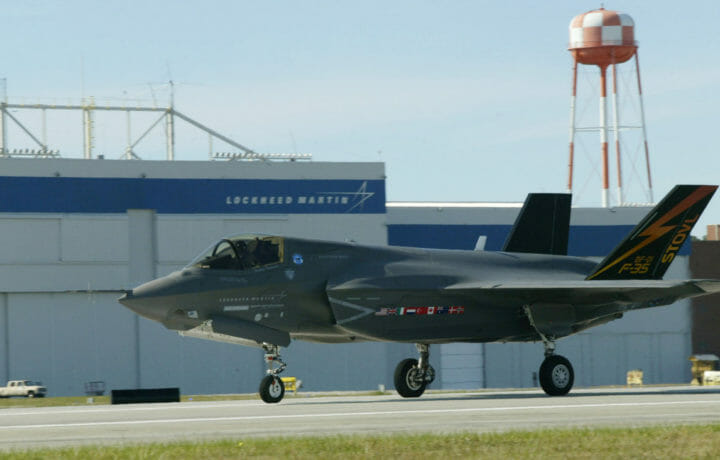During its earning call with analysts on Tuesday, aerospace giant Lockheed Martin reported a 9% year-over-year increase in its fiscal 2024 second-quarter net sales. The company saw $18.1 billion in sales during that period, a total backlog of $158 billion, and $1.6 billion in Q2 net earnings. It further stated that it expects 2024 sales to be between $70.5 billion and $71.5 billion – up from the previous forecast of $68.5 billion to $70 billion.
The increase comes as it was announced this month that the United States Department of Defense (DoD) would resume accepting Lockheed Martin’s fifth-generation F-35 Lightning II. As reported by Reuters, the Lightning II is now the world’s largest defense program, accounting for approximately 30% of the defense contractor’s revenue.
The aerospace company currently has a production rate of 156 aircraft per year, while it expects to deliver 75 to 100 planes to the government during the second half of 2024.
Refresh Delay, But Aircraft Deliveries Resume
Deliveries of the F-35 had been on hold since last summer while the company completed its Technology Refresh-3 (TR-3), which will increase the stealth fighter’s capabilities.
The DoD agreed to accept F-35s with a “truncated” version of the TR-3, while it will also withhold some payment to the defense contractor until the software upgrade is completed. TR-3 includes both hardware and software enhancements and has been described as a major component for the even more extensive update to the F-35, its “Block 4” version that would add several dozen new capabilities.
“The F-35 remains a top priority, and we recently delivered the first TR-3-configured aircraft to the customer and anticipate deliveries for 2024 to meet our expected range of 75-110 F-35s,” said CEO Jim Taiclet during the earning call.
“The TR-3 upgrade and further Block 4 enhancements represent a critical evolution in capability and their full development remains a top priority for us. These and further software updates over the life of the program will ensure that F-35 remains an effective deterrent to aggression and the cornerstone of Joint All-Domain operations now and decades into the future,” Taiclet added.
The full tech refresh package is now expected to be completed later this year.
“Over 95% of TR-3 capabilities are currently being flight-tested and we look forward to delivering full TR-3 combat capability to the customer,” Taiclet continued while noting that there is now a backlog of aircraft. “We expect deliveries of F-35 aircraft to exceed production for the next few years.”
The F-35 – a – Large and in Charge Program
The F-35 Lightning II was developed for the U.S. military following the end of the Cold War. The Joint Strike Fighter is produced in three unique variants including the F-35A conventional takeoff and landing model for the United States Air Force; the F-35B, a short/vertical takeoff and landing version that is operated by the United States Marine Corps; and the carrier-based F-35C, which is in service with the United States Navy and U.S. Marine Corps.
The stealth fighter has also been selected by several U.S. partners and allies around the world, including NATO members Denmark, Italy, the Netherlands, Norway, and the United Kingdom. In addition, Belgium, Canada, the Czech Republic, Finland, Germany, and Poland are also set to adopt the stealth fighter in the coming years to help maintain regional security and stability. Romania and Greece have also recently announced plans to acquire the all-weather multirole fighter.
Lockheed Martin expects the NATO members and other partners in Europe to have about 500 F-35s by the decade’s end.
Australia, Japan, South Korea, Singapore, and Switzerland are now either operators or future operators of the F-35, while Israel has adopted the F-35I Adir, a modified version of the Lightning II equipped with an enhanced electronic warfare system (EWS).
It was in March that the F-35 reached full-rate production (FRP), while there were nearly 3,500 orders for the three variants of the aircraft. Lockheed Martin also announced earlier this year that it had completed the production of the 1,000th F-35 – a notable number as few modern combat aircraft have reached a “four-figure” production run.




